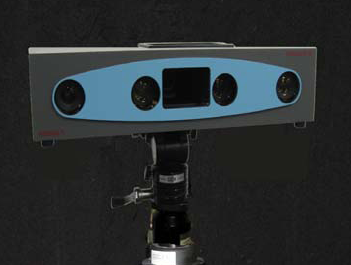KINSTON, N.C. – Spatial Integrated Systems, an R&D firm and systems integrator focusing on 3D data capture, announced this month it has been awarded a patent “for a system and method for generating structured light for three-dimensional image rendering.”
Greg Walker, director of corporate sales for SIS, said the new system builds off earlier technology, increasing both accuracy and speed of data capture. “It’s basically near real-time now,” he said, “so we can actually capture, say, human faces and heads instantly,” which opens up applications for biometric access control, for example.
But some applications might be less serious. The 3D Snapshot product that incorporates the technology could also make for very rapid souvenir creation. “After about 15 seconds, we can generate a point cloud,” Walker said. “We have some algorithms were we can add thickness, and some printers that can print almost automatically.” Which means you could have a statue of yourself made in about five minutes.
No, seriously. Instead of picture day for your kid’s sports league, it will be statue day. “I think you’ll see that in five years, absolutely,” Walker said. “Technology will evolve and prices will come down, and yeah, that will be the case.”
However, the request for the technology came from the Department of Defense, and the technology has serious applications for reverse engineering, even for creating real-time 3D video capture.
“The real reason we went down this road is that we do a lot of DoD and agency work, and they’ve stressed the importance of real-time non-contact data capture,” Walker said. Especially for facial recognition programs, 3D would provide much more data with which to make one-to-one matches.
“What makes that unique is the ability to use either infrared or regular light, so it could be passive or active screening, and non-contact and non-obtrusive,” he said.
Currently, the scanner captures roughly 25” by 16” by 16”, at a distance of about four feet. It gathers 307,200 points per capture, with accuracy of .016 inches (400 microns).
“We’ve already proven we can integrate with a turntable,” Walker said, “so you can get a full 360 without moving the camera. Or you can move the camera along the object, but when you do that, you have to use a registration ball, something to bring the registration together from the multiple shots.”
“Even though it’s not quite the ‘Jetsons’ solution,” Walker chuckled, “we’re getting pretty close.”






